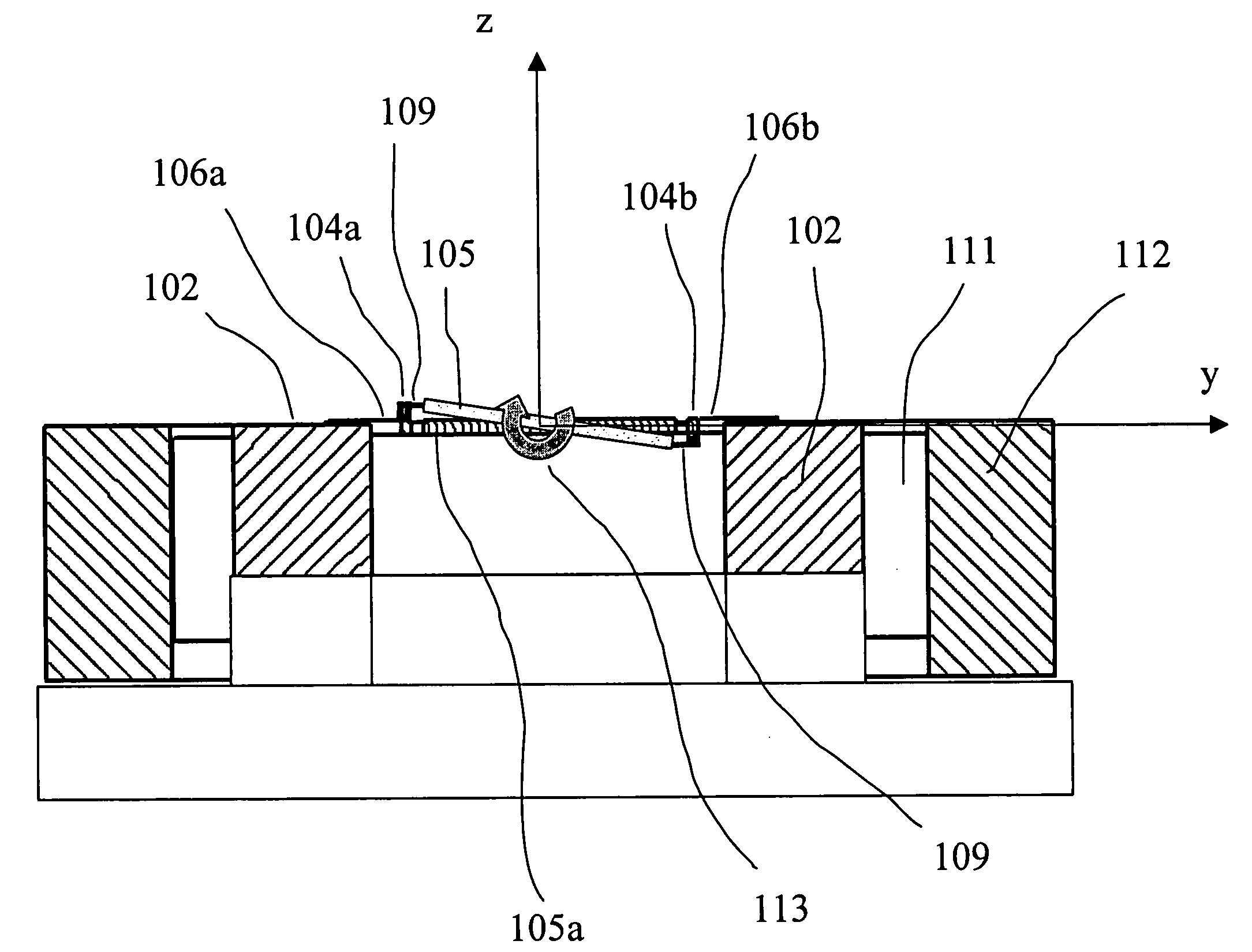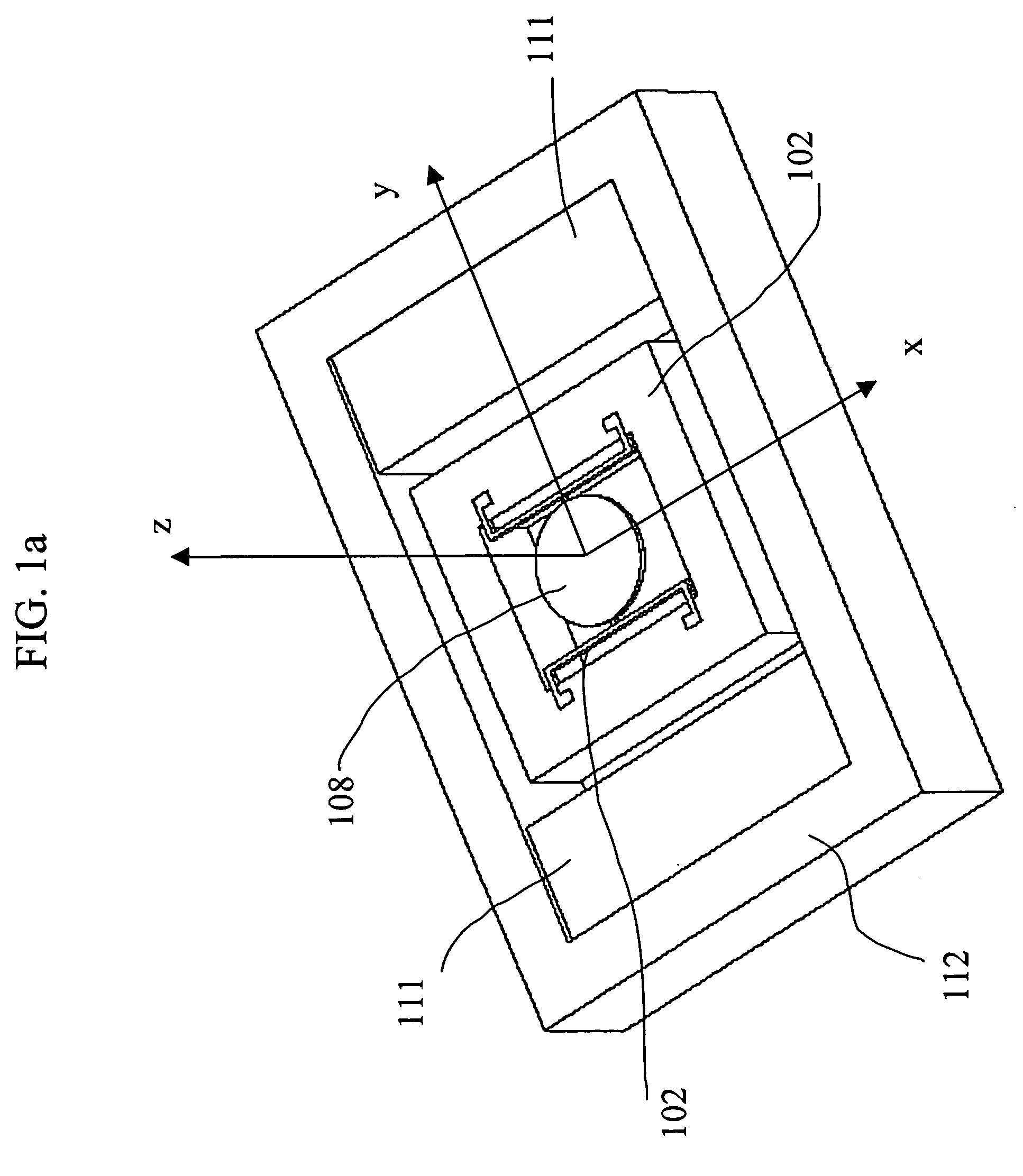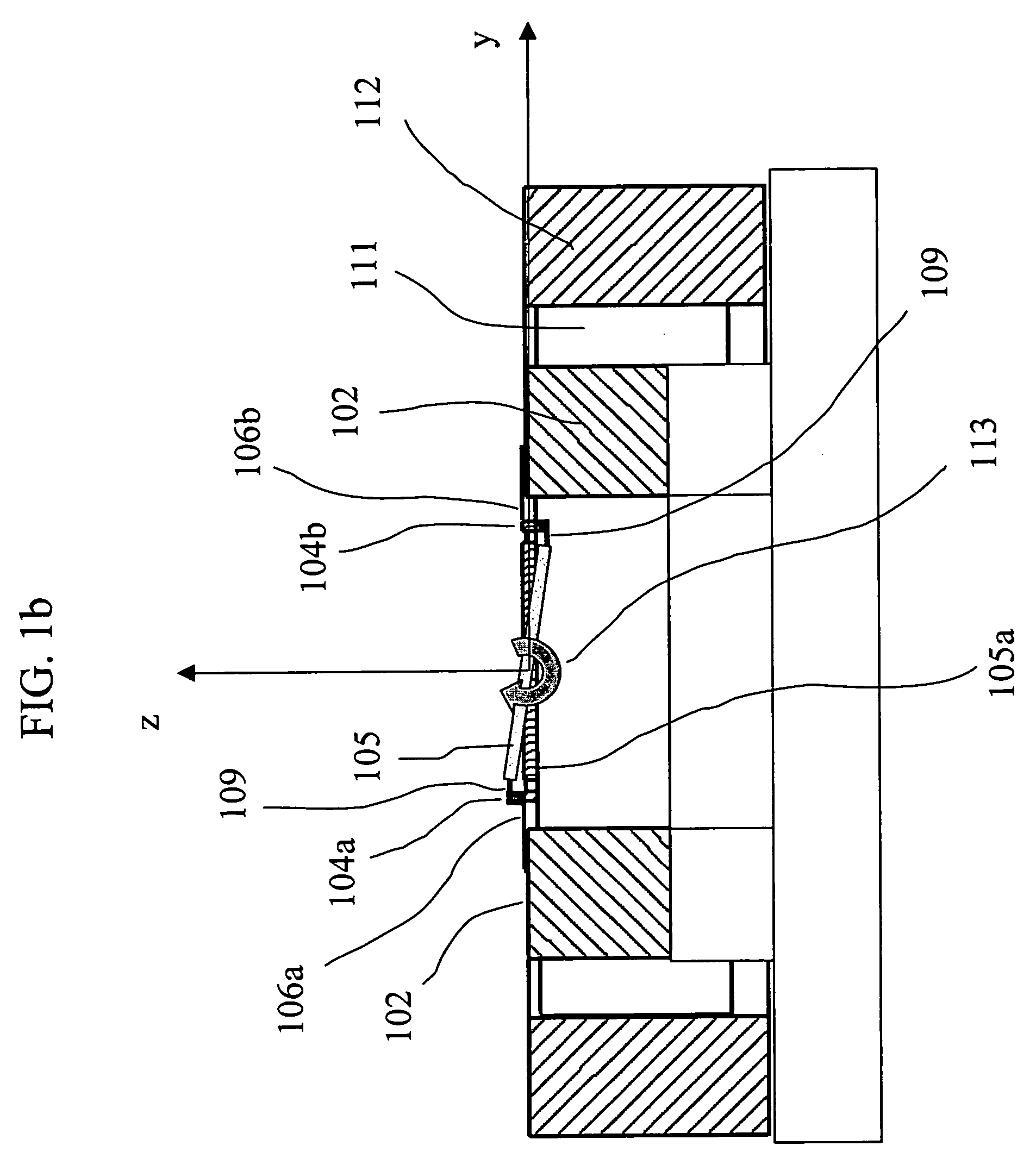Magnetically actuated fast MEMS mirrors and microscanners
a technology of magnets and mirrors, applied in the direction of optics, instruments, mountings, etc., can solve the problems of high power, high resolution and relatively large mems, and high and sometimes unreasonable driving voltages, and achieve high power and high resolution, high precision, and high scanning efficiency.
- Summary
- Abstract
- Description
- Claims
- Application Information
AI Technical Summary
Benefits of technology
Problems solved by technology
Method used
Image
Examples
Embodiment Construction
The present invention discloses magnetically electrically driven MEMS “plate type” mirrors and micro-scanners positioned in structures in which the magnetic or electromagnetic field is substantially parallel to the mirror plate. The mirrors may be categorized by symmetry as having either a symmetric or asymmetric design. They may be further. categorized as having, in either symmetry, one, two or three axes of rotation. The mirrors may be further categorized by their angular degrees of freedom as having either one DOF or two DOFs. The mirrors may be further categorized by their actuation mechanism as being driven by a single, double, triple or quadratic conductive flexural actuator (see definition below). A conductive flexural actuator according to the present invention may comprise one or more flexural members or beam springs, strips or leafs. Finally, the mirrors may be categorized by the arrangement of the actuators, which may be linear, triangular or square.
FIG. 1 shows schemat...
PUM
 Login to View More
Login to View More Abstract
Description
Claims
Application Information
 Login to View More
Login to View More - R&D
- Intellectual Property
- Life Sciences
- Materials
- Tech Scout
- Unparalleled Data Quality
- Higher Quality Content
- 60% Fewer Hallucinations
Browse by: Latest US Patents, China's latest patents, Technical Efficacy Thesaurus, Application Domain, Technology Topic, Popular Technical Reports.
© 2025 PatSnap. All rights reserved.Legal|Privacy policy|Modern Slavery Act Transparency Statement|Sitemap|About US| Contact US: help@patsnap.com



